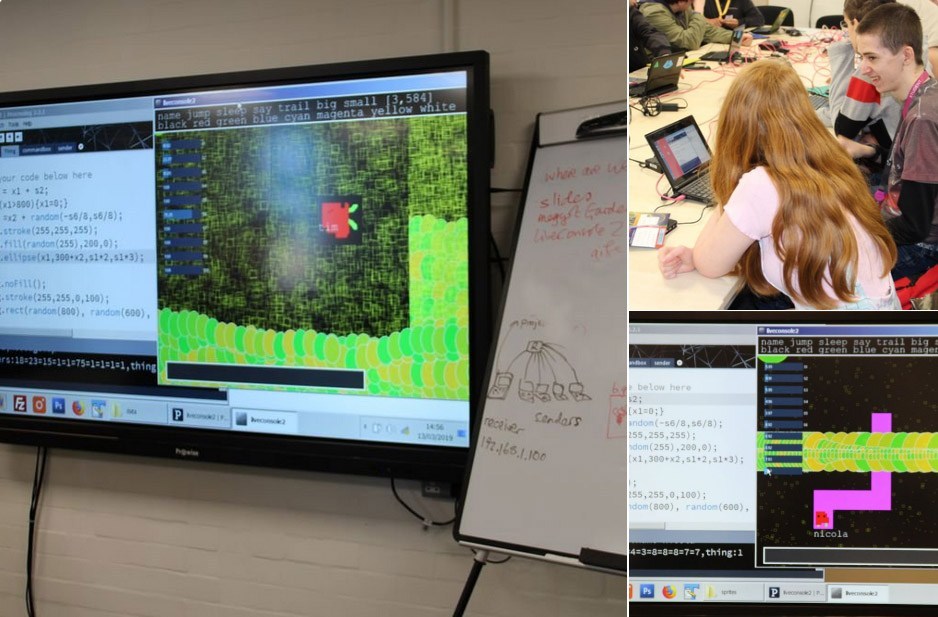Building a networked live coding collaborative art game with the students from Broadstairs College as part of our Dreamland residency.
So this project morphed into Maggot Brain a networked game designed and playtested by Broadstairs College students studying Computing and Art. The results were run for the public to add to Dreamland’s Easter activities. About 200 attended. We added in an instant sprite generator which went down a storm and we will be expanding this feature in future versions. The network was stable, one crash in 2 days, and we’ll also be using networks more, as they are an exciting way to build up a rich digital ecosystem.
There are loads of photos on our Maggot Brain Flickr site.


Maggot Brain enjoyed by the public at Dreamland. Maggot Brain will go on to star at the Margate Festival later this year. This is an exciting project which tackles a few firsts for us.
First time working with a mix of computer science and art students. This was a great idea – digital art and game making require many diverse skills, with people working in teams.
This is the first time we’ve attempted a network like this. So there were about 15 students and 8 netbooks Each of these machines can send messages to a central receiver (server) which parses the messages and puts all the outcomes onto a single shared screenspace – which is projected large in a room.
First time too exploring live coding and collaborative gaming.
The students were great fun, and full of ideas. The first session saw them getting up to speed in the Processing language, using basic creative coding, animating sprites and sliders to create robot faces and walking cats etc. The second session we attempted to get this all networked. Each student transfered their sprite animations and variable geometric into a live coding console. Here they could control the action on screen using text input and the sliders. This is the live coding part.

The students had coded the sliders to control the shapes moving across their screen, so the size, colour, speed could all be changed. The new settings could be sent to the receiver by pressing the paper plane. You could also send text messages as you can see above.

Once in the shared space the sprites would meet the maggots. These were inspired by thinking about how to create a game or puzzle like challenge which the network has to solve. The maggots start at the (H) and must be steered to the end goal where the number collected is shown (70). There are 100 maggots to collect in this way. This was inspired by the game Lemmings. To steer through all the patterns the sprites can make trails in 8 bit colours. That was the idea.
Unfortunately we couldn’t get the network to work. This created a great opportunity for a group debugging exercise where we attempted to focus in on the problem and we made some progress. We have 1 more session before the final one and we will sort this problem out then. Something to do with networked data packets being chopped in half and not being put together correctly at the other end. Networked coding is hard. You need 8 hands at once.
Here’s an image of the shared space in what we are now calling Maggot Brain.

Thanks to Jenny Bean and Matthew Bowen at Broadstairs College and Victoria and crew at Dreamland for organising the space for playtesting.
